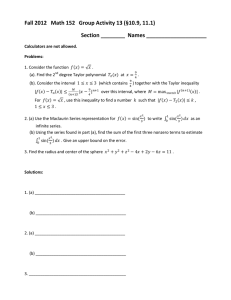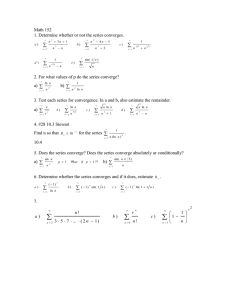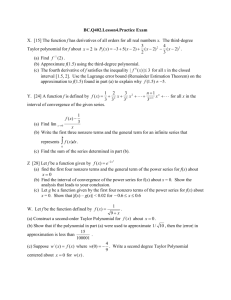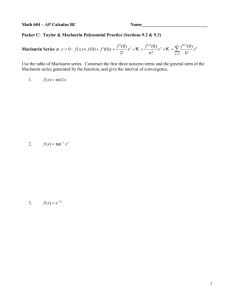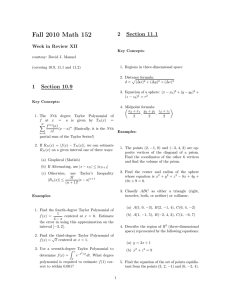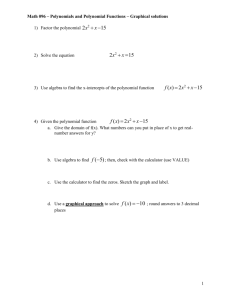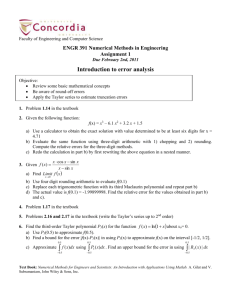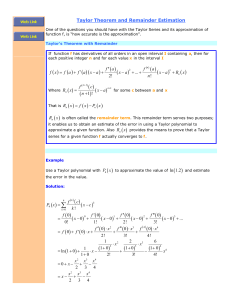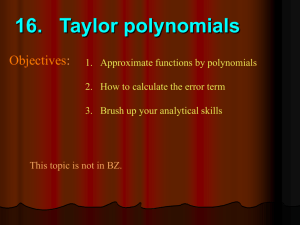MATH 181 (WHYTE), SPRING 08. SAMPLE PROBLEMS (1) Use the
advertisement
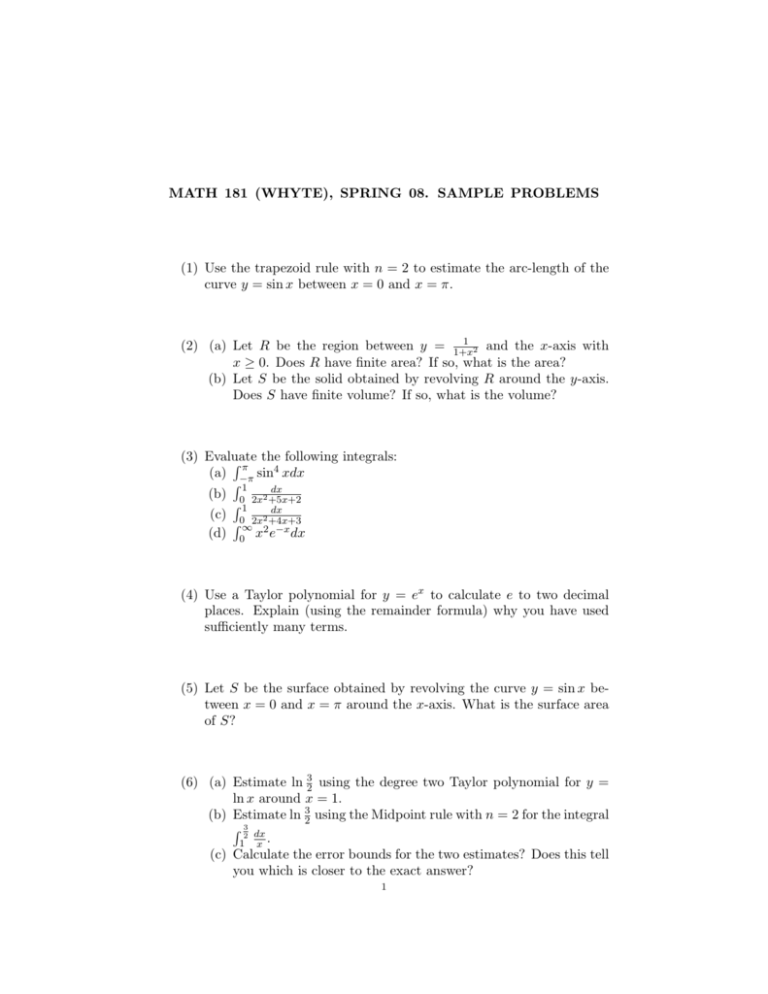
MATH 181 (WHYTE), SPRING 08. SAMPLE PROBLEMS (1) Use the trapezoid rule with n = 2 to estimate the arc-length of the curve y = sin x between x = 0 and x = π. 1 (2) (a) Let R be the region between y = 1+x 2 and the x-axis with x ≥ 0. Does R have finite area? If so, what is the area? (b) Let S be the solid obtained by revolving R around the y-axis. Does S have finite volume? If so, what is the volume? (3) Evaluate R π the4 following integrals: (a) −π sin xdx R1 dx (b) 0 2x2 +5x+2 R1 dx (c) 0 2x2 +4x+3 R ∞ 2 −x (d) 0 x e dx (4) Use a Taylor polynomial for y = ex to calculate e to two decimal places. Explain (using the remainder formula) why you have used sufficiently many terms. (5) Let S be the surface obtained by revolving the curve y = sin x between x = 0 and x = π around the x-axis. What is the surface area of S? (6) (a) Estimate ln 23 using the degree two Taylor polynomial for y = ln x around x = 1. (b) Estimate ln 23 using the Midpoint rule with n = 2 for the integral R 32 dx 1 x . (c) Calculate the error bounds for the two estimates? Does this tell you which is closer to the exact answer? 1 2 MATH 181 (WHYTE), SPRING 08. SAMPLE PROBLEMS (7) Does the improper integral your answer. R∞ 0 dx 1+x3 converge or diverge? Justify (8) What is the arc-length of the segment of the parabola y = 4 − x2 above the x-axis? (9) Find a formula for the general Taylor polynomial Tn (x) for the following functions around the specified points: 2 (a) √ e−x around x = 0 (b) x around x = 1
